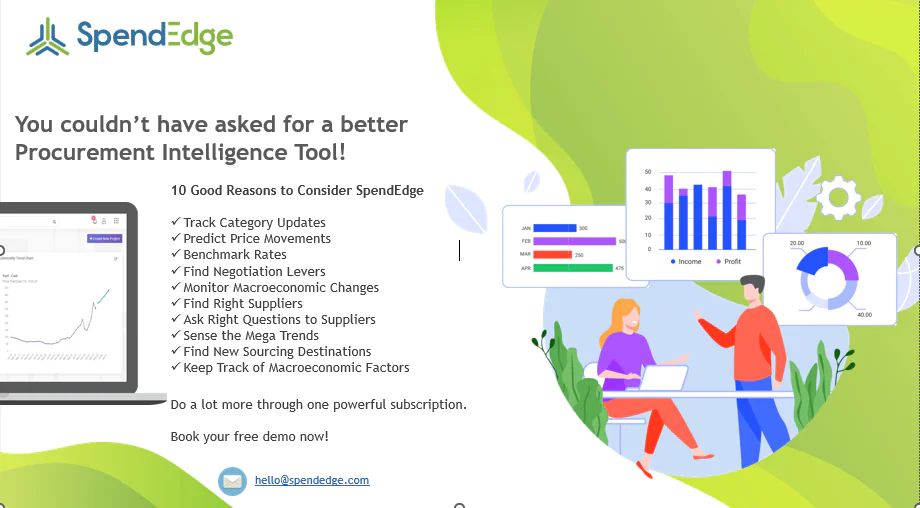Author: Yatheesh Chandrasekaran
Effective spend management is crucial for achieving cost efficiency and driving profitability. Spend management involves overseeing and controlling company expenditures to ensure optimal use of financial resources. This encompasses several functions, including procurement, finance, and supply chain management.
One of the primary challenges in spend management is bridging the gap between procurement and finance departments. Ensuring these departments work in tandem can lead to more strategic purchasing decisions and better financial oversight. For example, by using advanced analytics and automated reporting tools, procurement teams can provide finance departments with real-time data on supplier performance and purchasing trends, facilitating more accurate budgeting and financial planning.
Automation
Automation plays a crucial role in streamlining administrative tasks within spend management. By automating routine processes such as invoice processing and purchase order management, organizations can reduce the administrative burden on human resources and minimize the risk of errors. Tools like Runn, a resource planning technology, can help manage resources efficiently, allowing teams to focus on more strategic activities that drive value.
Agile Process in Spend Management
Adopting agile methodologies for spend management can transform how organizations handle their expenditures, making processes more responsive and adaptable. Agile principles, originally from software development, emphasize iterative progress, collaboration, and flexibility, which are highly beneficial for managing spend in dynamic business environments.
One key aspect of agile spend management is the use of short, iterative cycles or “sprints.” These sprints allow organizations to review and adjust their spend strategies frequently, ensuring alignment with current market conditions and business goals. For instance, procurement teams can conduct regular sprint reviews to assess supplier performance, renegotiate contracts, or identify cost-saving opportunities.
Another critical component is cross-functional collaboration. Agile spend management encourages collaboration between procurement, finance, marketing, and other departments. This integrated approach ensures that all relevant stakeholders are involved in decision-making, leading to more informed and cohesive strategies.
Agile methodologies also prioritize transparency and continuous improvement. By maintaining a transparent backlog of spend-related tasks and regularly reviewing progress, organizations can quickly identify inefficiencies and implement improvements. Tools like Kanban boards and Scrum meetings facilitate real-time tracking and communication, enhancing overall spend visibility and control.
Financial Oversight and Cost Control
Effective spend management requires robust financial oversight and cost control mechanisms. Implementing advanced budgeting and forecasting tools can help finance teams monitor expenditures more accurately and identify areas for cost savings. For instance, using automated financial reporting systems can streamline the process of tracking expenses, making it easier to ensure that spending aligns with budgetary constraints.
Category Management: The 4Ps
Category management involves strategically managing product categories to maximize profitability. The 4Ps of category management—Planning, Procurement, Performance, and Promotion—are essential components of effective spend management.
- Planning: Developing comprehensive marketing and purchasing plans that align with organizational goals.
- Procurement: Ensuring that procurement strategies are cost-effective and support overall business objectives.
- Performance: Monitoring supplier performance and product success to make data-driven decisions.
- Promotion: Implementing promotional strategies that drive sales and enhance brand value.
Project Management Institute (PMI) Standards
Adhering to Project Management Institute (PMI) standards can significantly enhance spend management processes. The PMI provides a comprehensive framework for project management that includes best practices for budgeting, resource allocation, and risk management. This framework, detailed in PMI’s Project Management Body of Knowledge (PMBOK) Guide, offers a global standard for managing complex projects, including those focused on spend management.
Budgeting
Effective budgeting is a cornerstone of spend management. PMI standards emphasize the importance of developing a detailed project budget that outlines all anticipated costs. This includes direct costs such as procurement expenses, materials, and services, as well as indirect costs like administrative overheads. By creating a comprehensive budget at the outset of a spend management project, organizations can establish a clear financial roadmap.
PMI advocates for the use of cost estimation techniques such as analogous estimating, parametric estimating, and bottom-up estimating. These techniques help ensure that all potential costs are identified and quantified accurately. For instance, in a spend analysis project, analogous estimating might involve comparing costs with previous similar projects, while parametric estimating could use statistical models to predict expenses based on key variables. Additionally, PMI recommends setting aside contingency reserves to address unexpected expenses, thereby minimizing the risk of budget overruns.
Resource Allocation
Resource allocation is another critical aspect of spend management addressed by PMI standards. Proper resource allocation ensures that the necessary human, financial, and material resources are available when needed to achieve spend management goals. PMI recommends developing a resource management plan that details how resources will be acquired, allocated, and managed throughout the project lifecycle.
For spend management projects, this might involve allocating resources for data collection, analysis, and reporting. Tools such as resource leveling and resource smoothing can help project managers optimize the use of available resources, reducing bottlenecks and ensuring smooth project progression. By following PMI’s guidelines for resource allocation, organizations can avoid the pitfalls of under or over-allocation, leading to more efficient use of resources and better project outcomes.
Risk Management
Risk management is an integral part of the PMI framework and a crucial element of effective spend management. PMI standards advocate for a proactive approach to risk management, which involves identifying, analyzing, and responding to potential risks that could impact the project’s success. This includes both negative risks (threats) and positive risks (opportunities).
In the context of spend management, risks could include supplier failures, market volatility, or inaccurate data. PMI recommends developing a risk management plan that outlines how these risks will be managed and controlled. Techniques such as SWOT analysis and expert judgment can be used to identify risks specific to spend management. Once identified, these risks should be analyzed to determine their potential impact and likelihood. This analysis helps in prioritizing risks and planning appropriate responses, such as securing alternative suppliers or implementing stricter data validation processes.
Structured Approach and Delivering Desired Outcomes
By following PMI guidelines, organizations can ensure that their spend management projects are well-structured and deliver the desired outcomes. PMI’s emphasis on meticulous planning, clear communication, and ongoing monitoring helps project managers stay on track and adapt to changes effectively. This structured approach facilitates better decision-making, enhances stakeholder confidence, and improves the likelihood of project success.
For instance, a company implementing a comprehensive spend analysis system can benefit from PMI standards by developing a detailed project plan that includes a realistic budget, effective resource allocation, and a robust risk management strategy. By adhering to PMI’s best practices, the company can navigate challenges such as fluctuating supplier prices or data inconsistencies, control costs, and achieve its spend management objectives.
A practical example of PMI standards enhancing spend management can be seen in the implementation of a new procurement system at a large pharmaceutical products manufacturer based in Europe where SpendEdge provided sourcing and procurement support. By following PMI guidelines, the firm developed a structured project plan that included a detailed budget for software acquisition, training, and integration costs. SpendEdge was instrumental in identifying costs, potential suppliers, best practices. Based on the available information, the manufacturer was able to allocate resources efficiently, ensuring that key personnel from procurement, IT, and finance were available throughout the project. Risk management strategies were put in place to address potential issues such as supplier delays and data migration challenges. As a result, the project was completed on time and within budget, leading to improved procurement efficiency and significant cost savings.
Supplier Performance and Cost Savings
Monitoring and evaluating supplier performance is critical for achieving cost savings. By establishing key performance indicators (KPIs) for suppliers, organizations can ensure that they are getting the best value for their money. For instance, regular supplier performance reviews can help identify opportunities for cost reductions, such as negotiating better terms or finding alternative suppliers.
Price Optimization
Price optimization involves adjusting pricing strategies to maximize profitability. By analyzing market data and customer behavior, organizations can determine the optimal price points for their products and services. For example, implementing dynamic pricing models can help businesses respond to market demand and competition, ensuring they remain competitive while maximizing revenue.
Implementation and Monitoring
Effective implementation and monitoring are crucial for successful spend management. Once a spend management strategy is developed, it must be implemented carefully to ensure all stakeholders are aligned. Continuous monitoring of the implementation process is essential to identify any issues and make necessary adjustments.
Conclusion
Streamlining spend management is a vital path to profitability for organizations. By bridging the gap between procurement and finance, automating administrative tasks, adopting agile methodologies, and leveraging advanced analytics, businesses can achieve significant cost efficiencies. Real-world examples demonstrate the tangible benefits of effective spend management, from improved supplier performance to optimized pricing strategies. By adhering to best practices and continuously monitoring their spend management processes, organizations can drive revenue growth and enhance their bottom line.





